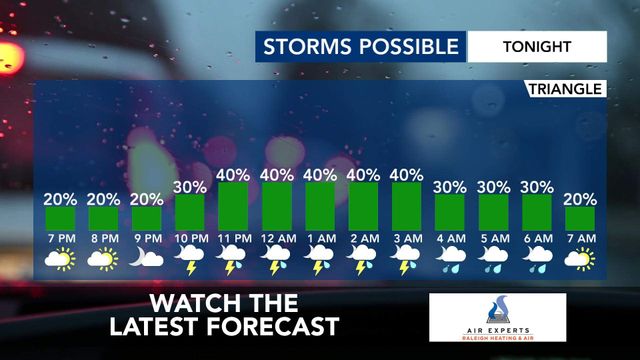Voter ID took hold in the North Carolina primary. But challenges remain for the fall election
RALEIGH, N.C. (AP) — Nearly everyone who voted in person in last month's North Carolina's primary showed a qualifying photo identification, a top election official told legislators Wednesday. But it's unknown how many didn't bother trying to vote in person or by mail because they lacked an ID, even with options to cast ballots without one.
In all, 1.8 million people voted in the March 5 primary, which marked the first statewide election that the photo ID mandate approved in 2018 by the Republican-controlled General Assembly was actually implemented. Legal challenges — one still pending — had delayed its initiation until smaller municipal elections held last fall.
A state board presentation to a General Assembly elections oversight committee said over 99.9% of in-person voters during early voting or on the primary day showed a valid photo ID. That essentially matches the same percentage among those who voted in person during three tranches of the city elections.
The state board spent roughly $100,000 for an advertising campaign leading to the primary focused on urging people who had qualifying IDs to bring it with them to vote in person. Poll workers handled much of the work to carry out the new rules.
“I commend the county boards of elections and how they handled this rollout. We saw good numbers for the municipal and good numbers for the primary,” state elections Executive Director Karen Brinson Bell told lawmakers.
Someone who can’t show a qualifying ID casts a provisional ballot. That person then must either fill out an ID exception form or return to their county board office with their ID before the county canvass for their ballot to count. People casting traditional absentee ballots also are asked to insert an ID copy into their envelope or fill out an exception form.
The state board has reported 1,185 voters cast provisional ballots related to photo ID, from which choices from slightly over 700 of the ballots were counted. The other 475 ballots weren't counted in most cases because voters who didn’t fill out an exception form failed to return with an ID.
Critics of the voter ID mandate have argued the requirement will discourage people from voting at all, depressing turnout, especially among minority residents and the poor. A federal lawsuit challenging the ID law and scheduled to begin next month makes similar bias claims.
Sen. Natasha Marcus, a Mecklenburg County Democrat, said she appreciated the state board's voter education effort but questioned whether the board knew how many people decided "they weren’t going to come and vote because they knew they didn’t have voter ID."
“I feel like that’s a gap in our understanding of the impact of the voter ID law,” Marcus said. Brinson Bell said that she wasn't immediately aware of information calculating such an effect. But she said municipal and primary voters are usually among the most educated about the voting process and more likely to know how to get their vote to count. But that will change in a general election where roughly three times as many people are likely to vote.
The state board plans to spend another $730,000 on a voter ID advertising campaign between now and the Nov. 5 election that will also include messages on how individuals who lack IDs can obtain one, board attorney Paul Cox said.
“We know we’re going to need to reach a much broader, larger volume of individuals to make sure that they’re informed,” Brinson Bell said.
Also looking to the fall elections, Brinson Bell addressed staffing concerns, particularly among directors for the state's 100 counties. She said that there have been 60 different director changes since 2019, the year she began her current post. Thirty-seven such changes were retirements, some of which were brought on by a difficult environment in an era where election administration has been challenged by the public and politicians.
“Election professionals have faced continued hostility, harassment, substantial changes in their workload and the demands on them,” Brinson Bell said. This turnover means that 2024 will mark the first presidential election in a permanent director's role for at least 28 of the county directors, she added.









